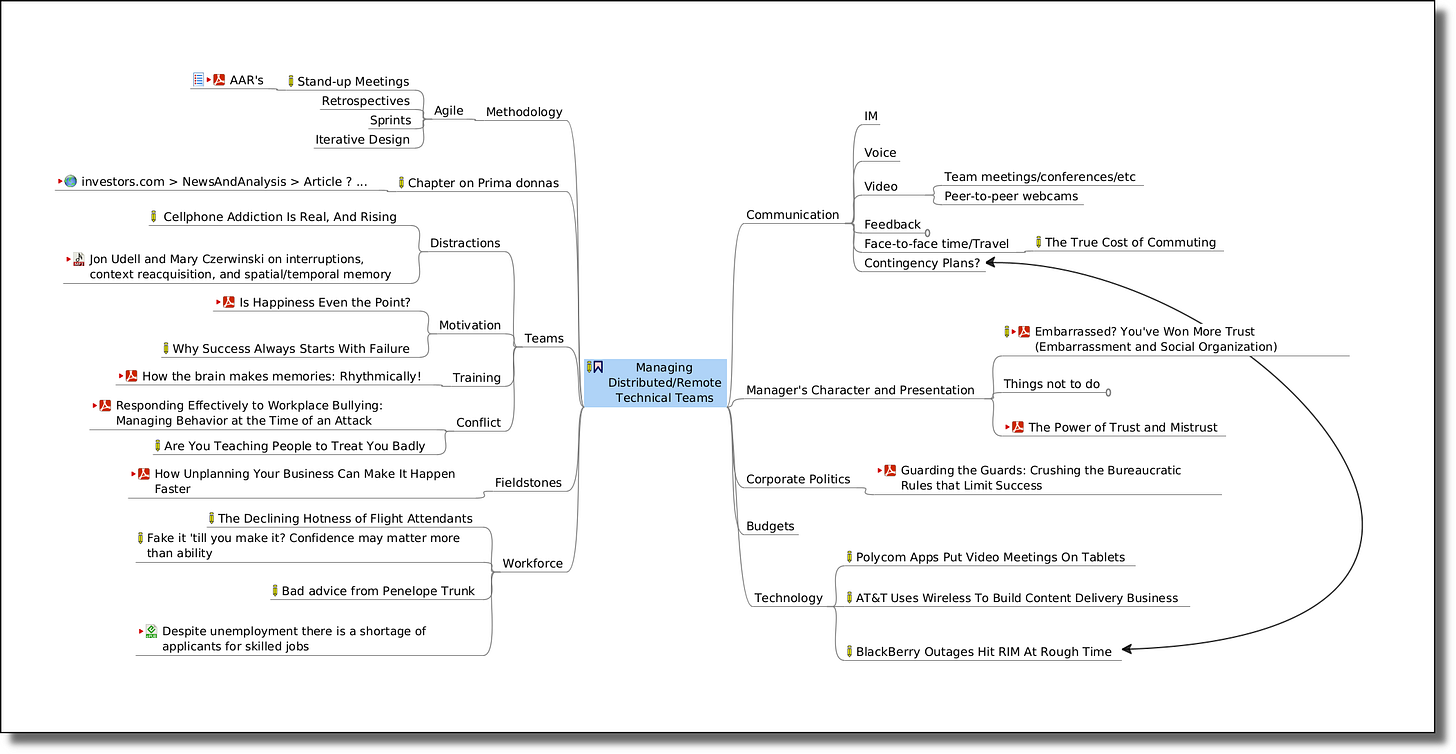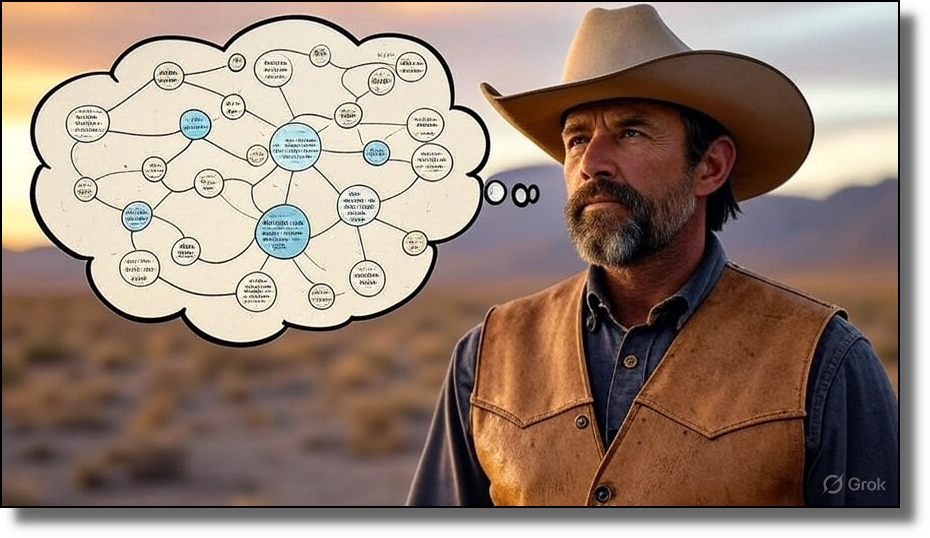Mind mapping is a way to capture our thoughts and ideas on paper (originally) or in a software application. They are a blend of visual thinking and knowledge organization. They also have a long history. While archaeologist haven't called this out, there are cave paintings that remind me of mind mapping. The "Tree of Porphyry," attributed to the 3rd century Greek philosopher Porphyry, organized the work of Aristotle in an attempt to map complex philosophical ideas. More recently, the term "mind mapping" was popularized in the 1970's by Anthony Buzan, who was inspired by techniques used by Leonardo da Vinci and Albert Einstein, among others. The value of mind mapping for learning and memory is backed by several scientific studies.[1] [2] [3] [4] [5]
Before Obsidian existed, I use various mind mapping tools. The best was a tool called "FreeMind." Until last year, I had been using FreeMind for close to 20 years. Alas, it hasn't been updated in over a decade and last year it no longer worked reliably on my Linux desktop. Fortunately, the FreeMind project appears to have been forked and lives on as Freeplane. So at least I can still open and view the trove of mind maps created with Freemind. For new mind maps, my go-to tool is SimpleMind.

Unlike Obsidian that runs on all my devices, I haven't found a mind mapping tool with the same reach. Freeplane runs great on my desktop, but has no Android counterpart. SimpleMind offers an Android app but doesn't offer a Linux desktop version. I can run SimpleMind on Linux under Wine, but performance depends on how well Wine keeps up with SimpleMind's OS needs.[6]
"Tools I Use: Mindmaps" last updated on 2025.08.24.
Footnotes
Beal, C., & Hontvedt, M. (2023). Video-based mind maps in higher education: A design-based research study of pre-service teachers' co-construction of shared knowledge. Learning, Culture and Social Interaction, 41, Article 100720. https://doi.org/10.1016/j.lcsi.2023.100720↩︎
Farrand, P., Hussain, F., & Hennessy, E. (2002). The efficacy of the 'mind map' study technique. Medical education, 36(5), 426–431. https://doi.org/10.1046/j.1365-2923.2002.01205.x↩︎
Kernan WD, Basch CH, Cadorett V. Using Mind Mapping to Identify Research Topics: A Lesson for Teaching Research Methods. Pedagogy in Health Promotion. 2017;4(2):101-107. doi:10.1177/2373379917719729↩︎
Palaniappan, V., Karthikeyan, K., & Mohan, R. (2023). Mind Mapping as a Novel Method in Teaching the Morphology of Skin Lesions: A Quasi-Experimental Study. Journal of advances in medical education & professionalism, 11(2), 80–85. https://doi.org/10.30476/JAMP.2023.97240.1750↩︎
Shi, Yinghui & Yang, Huiyun & Dou, Yi & Zeng, Yong. (2022). Effects of mind mapping-based instruction on student cognitive learning outcomes: a meta-analysis. Asia Pacific Education Review. 24. 1-15. 10.1007/s12564-022-09746-9. ↩︎
There are several Obsidian plugins that allow for mind maps to be created, including Obsidian's native canvas feature, but as yet they are not as powerful or flexible as the stand-alone applications I mention.↩︎
I hope you will return regularly to The Remnant's Way as I often update posts, particularly Ab Initio, and do not always publish to email posts that are meant to support or serve as reference to existing or future posts.
And please consider becoming a paid subscriber. Doing so supports my writing efforts and grants me the most precious of all resources - dedicated time for writing. And for that, I am deeply grateful. If you prefer, buy me a cup of coffee if there is an article here and there that you enjoyed or found valuable.
Image credit: Grok Expert


